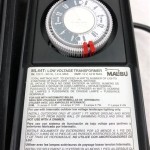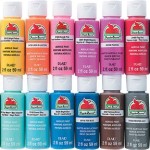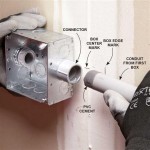How to Repaint Cast Iron Outdoor Furniture
Cast iron outdoor furniture, prized for its durability and timeless aesthetic, can become weathered and worn over time. Rust, chipped paint, and general exposure to the elements can detract from its beauty and longevity. Repainting cast iron furniture is a worthwhile endeavor that can restore its original charm, extend its lifespan, and protect it from further deterioration. This article provides a comprehensive guide on how to properly repaint cast iron outdoor furniture, ensuring a professional and long-lasting finish.
Preparation: The Foundation for a Successful Paint Job
Proper preparation is arguably the most crucial step in repainting cast iron furniture. A meticulous approach to this phase ensures optimal paint adhesion and a smooth, even finish. Neglecting proper preparation can lead to premature paint failure, rust recurrence, and a less-than-desirable aesthetic outcome.
The first step involves thoroughly cleaning the furniture. This removes dirt, grime, mildew, and loose paint flakes. A mixture of mild detergent and warm water is generally sufficient for this initial cleaning. Use a scrub brush with stiff bristles to agitate the surface and dislodge any stubborn debris. Rinse the furniture thoroughly with clean water and allow it to dry completely before proceeding.
Once the furniture is clean and dry, carefully inspect it for rust. Rust is a common problem with cast iron and needs to be addressed comprehensively. Several methods can be used to remove rust, each with varying degrees of effectiveness and required effort.
For light surface rust, a wire brush or sandpaper may suffice. Use a wire brush with firm bristles to scrub away the rust, being careful not to gouge or damage the underlying metal. Sandpaper, particularly medium-grit (80-120 grit), can also be used to remove surface rust. Follow up with a finer grit sandpaper (180-220 grit) to smooth the surface and prepare it for priming.
For more significant rust accumulation, chemical rust removers may be necessary. These products typically contain phosphoric acid or other acid-based compounds that dissolve rust. Apply the rust remover according to the manufacturer's instructions, ensuring adequate ventilation and wearing appropriate protective gear, such as gloves and eye protection. After the recommended dwell time, thoroughly rinse the furniture with water to remove any remaining rust remover residue. Neutralizing the surface after using a strong chemical rust remover is always a good practice. Baking soda and water solution can often do the job.
Another effective method for removing rust is sandblasting. This involves using a high-pressure stream of abrasive material, such as sand or glass beads, to blast away rust and old paint. Sandblasting is generally more effective than manual methods for removing heavy rust and can also create a slightly textured surface that promotes better paint adhesion. However, sandblasting requires specialized equipment and should be performed in a well-ventilated area. If you are not experienced with sandblasting, it is advisable to hire a professional.
After removing the rust, assess the furniture for any cracks, breaks, or other structural damage. These imperfections should be repaired before repainting. Small cracks can often be filled with epoxy filler specifically designed for metal. Follow the manufacturer's instructions for mixing and applying the epoxy. Allow the epoxy to cure completely before sanding it smooth to blend with the surrounding surface.
Once all repairs are complete, thoroughly clean the furniture again to remove any dust or debris generated during the rust removal and repair processes. Wipe down the surface with a tack cloth to ensure a completely clean surface before priming.
Priming: Ensuring Adhesion and Protection
Priming is an essential step in repainting cast iron furniture. Primer serves several important functions: it provides a uniform surface for the paint to adhere to, it seals the metal to prevent rust from recurring, and it can enhance the color and durability of the topcoat. Choosing the right primer is crucial for achieving a long-lasting and aesthetically pleasing finish.
For cast iron furniture, a rust-inhibiting primer is highly recommended. These primers contain special additives that help to prevent rust from forming beneath the paint. Several types of rust-inhibiting primers are available, including oil-based, latex, and epoxy primers. Oil-based primers offer excellent rust protection but may require longer drying times and more thorough cleaning. Latex primers are easier to clean up and dry faster but may not provide as much rust protection as oil-based primers. Epoxy primers are known for their exceptional durability and corrosion resistance but are typically more expensive and may require specialized application techniques.
Before applying the primer, ensure that the furniture is completely dry and free of any dust or debris. Apply the primer in thin, even coats, using a brush, roller, or spray gun. A brush is often preferred for intricate areas and details, while a roller can be used for larger, flat surfaces. A spray gun provides the most even and consistent coverage but requires proper technique and safety precautions, including wearing a respirator and working in a well-ventilated area.
Allow the primer to dry completely according to the manufacturer's instructions. Multiple coats of primer may be necessary to achieve adequate coverage and rust protection. Lightly sand the primed surface with fine-grit sandpaper (220-320 grit) to smooth out any imperfections and create a better surface for the topcoat to adhere to. Wipe down the surface with a tack cloth to remove any sanding dust before proceeding to the painting stage.
Painting: Applying the Topcoat
The final step in repainting cast iron furniture is applying the topcoat. This is where you can choose the color and finish that best suits your aesthetic preferences. Several types of paint are suitable for cast iron furniture, each with its own advantages and disadvantages.
Oil-based paints offer excellent durability and weather resistance, making them a popular choice for outdoor furniture. They provide a hard, glossy finish that is resistant to chipping and fading. However, oil-based paints require longer drying times and more thorough cleaning than latex paints. They also tend to emit strong odors and may require special disposal methods.
Latex paints are water-based and easier to clean up than oil-based paints. They dry faster and emit fewer odors. While latex paints have improved significantly in recent years, they may not be as durable or weather-resistant as oil-based paints, especially in harsh climates. Consider using a high-quality exterior latex paint specifically formulated for metal surfaces.
Acrylic paints offer a good balance of durability, weather resistance, and ease of use. They are available in a wide range of colors and finishes and can be applied with a brush, roller, or spray gun. Acrylic paints are also relatively easy to clean up and dry quickly.
Powder coating is another option for finishing cast iron furniture. This involves applying a dry powder coating to the metal surface and then baking it in an oven to create a durable, chip-resistant finish. Powder coating is typically more expensive than traditional painting methods but offers superior durability and longevity. This process usually requires specialized equipment and is best left to professionals.
Before applying the topcoat, ensure that the primed surface is clean, dry, and free of any dust or debris. Apply the paint in thin, even coats, using a brush, roller, or spray gun, similar to the priming process. Avoid applying too much paint in one coat, as this can lead to drips and runs. Allow each coat to dry completely before applying the next one.
Multiple coats of paint are typically necessary to achieve full coverage and a uniform finish. Lightly sand the painted surface with fine-grit sandpaper (320-400 grit) between coats to smooth out any imperfections and improve adhesion. Wipe down the surface with a tack cloth to remove any sanding dust before applying the next coat.
Once the final coat of paint has dried completely, inspect the furniture for any imperfections or areas that need touch-up. Use a small brush to carefully touch up any spots where the paint is thin or uneven. Allow the touch-up paint to dry completely before using the furniture.
To further protect the painted finish, consider applying a clear coat of polyurethane or other protective sealant. This will help to shield the paint from scratches, fading, and other damage. Apply the clear coat in thin, even coats, following the manufacturer's instructions.
Allow the painted furniture to cure completely before placing it outdoors. Curing times can vary depending on the type of paint used and the environmental conditions. Refer to the manufacturer's instructions for specific curing recommendations. Proper curing ensures that the paint hardens fully and develops its maximum durability and weather resistance.

Best Ways To Paint Wrought Iron True Value

How To Spray Paint Metal Outdoor Furniture Last A Long Time H2obungalow

How To Paint Metal Patio Furniture

How To Paint Metal Patio Furniture

How To Spray Paint Metal Outdoor Furniture Last A Long Time H2obungalow

How To Spray Paint Patio Furniture Like A Pro For Less Than 50 Lehman Lane

How To Paint Metal Patio Furniture

How To Paint Fix Up Rusty Patio Furniture Basics Better Homes Gardens

How To Clean And Repaint Wrought Iron Patio Furniture White Lilac Farmhouse

Cast Iron Outdoor Chair Makeover At Home With Ashley
Related Posts







